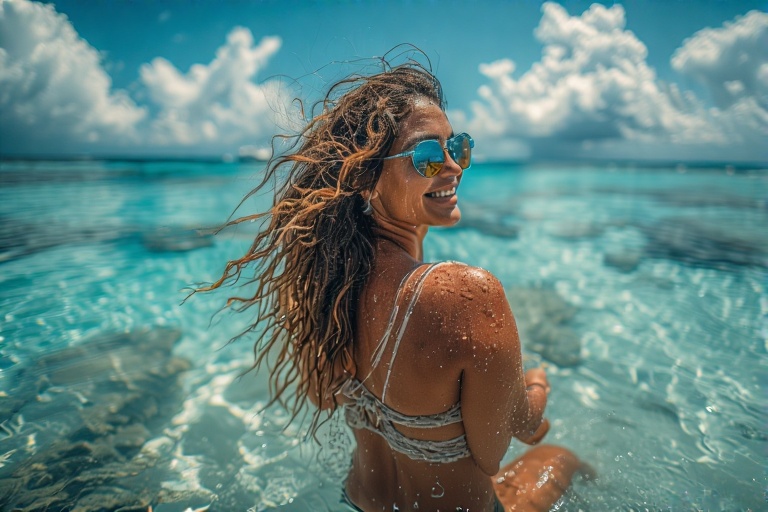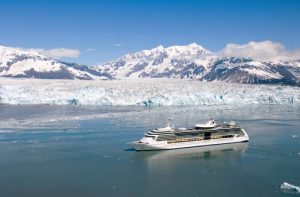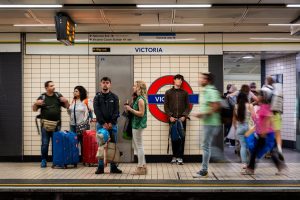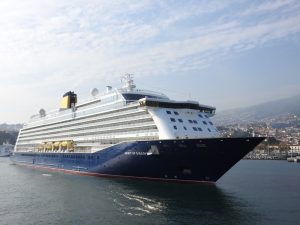Tuesday, July 22, 2025
The Cayman Islands has formally come together with Aruba, Anguilla, Barbados, Dominica, Grenada and Curaçao to illuminate the best Caribbean countries where you can gleam in pristine paradise without a care, serving as the ultimate safe travel destinations — due to their extremely low crime rates, heavy police presence, political stability, as well as regular Level 1 travel advisories from the U.S. State Department, Canada, and UK. Amid a region sometimes known more for its beauty than its stability, these countries all stand out for their relatively peaceful, well-run and visitor-friendly qualities. And as 2025 rolls out, they’re both not only boasting record-setting tourist arrivals, but their glowing is being noticed on a global scale as go-to refuges for travelers in need of refuge and relaxation, not to mention sun-soaked salvation.
Cayman Islands – Prosperous, Peaceful, and Well-Policed

Why It’s Safe:
The Cayman Islands has emerged as one of the safest destinations in the Caribbean, thanks to its well-established legal system, strict gun control laws, and a strong community-policing model. Crime rates remain exceptionally low—especially violent incidents, which are nearly unheard of in major tourist zones like George Town and Seven Mile Beach. The U.S. State Department classifies the islands under Level 1 travel advisory, which is the most favorable safety category, requiring no special precautions. Visitors often note how clean, orderly, and secure the islands feel—even when exploring alone or at night.
Advertisement
Advertisement
The safety infrastructure goes beyond policing. Cayman boasts excellent healthcare facilities, fast emergency response systems, and clear signage and lighting in public areas. These details, while subtle, reinforce a sense of control and confidence for travelers looking for both relaxation and reassurance.
Tourism Stats:
Tourist arrivals reflect this confidence. In 2024, the Cayman Islands welcomed 437,842 stay-over visitors, a modest 2% increase over 2023. More significantly, Q1 2025 saw a 5.3% year-over-year increase in arrivals, signaling rising momentum. U.S. travelers continue to dominate the market, representing over 83% of total arrivals, with notable growth from Midwest and Northeast states. In fact, tourism officials say the island is now on track to match or surpass its pre-pandemic record levels by the end of 2025.
This growth is backed by airlift expansion, luxury resort investments, and aggressive marketing around Cayman’s core strengths: upscale experiences, clear waters, and—above all—peace of mind. Travelers seeking a clean, calm, and crime-free escape are increasingly choosing Cayman as their Caribbean favorite.
Cayman Islands City Guide
Top Things to Do:
- Snorkel or scuba dive at Stingray City, one of the world’s most famous shallow-water wildlife experiences.
- Visit the Cayman Turtle Centre to interact with rescued sea turtles and marine life.
- Explore Camana Bay for shopping, dining, and rooftop views.
Must-Visit Places:
- George Town: The capital is perfect for museums, shopping, and architecture.
- Pedro St. James Castle: A restored 18th-century plantation house and cultural site.
- Queen Elizabeth II Botanic Park: Ideal for nature walks and seeing the rare blue iguana.
Best Beaches:
- Seven Mile Beach (Grand Cayman): World-famous for its powder-white sand and crystal water.
- Rum Point: More relaxed and great for kayaking and snorkeling.
- Smith Cove: A local favorite for quiet swimming and picnics.
Aruba – Low Crime, High Trust, and Built for Visitor Safety

Why It’s Safe:
Aruba has long been recognized as one of the Caribbean’s safest and most visitor-friendly destinations. With a reputation for low violent crime, a stable government, and proactive tourism-focused policing, the island has created a well-structured safety ecosystem that travelers trust. The U.S. State Department gives Aruba its top-tier Level 1 travel advisory, citing no heightened risks.
What sets Aruba apart is how deeply safety is integrated into its tourism model. Hotel districts, beaches, and shopping areas are well-patrolled and equipped with surveillance systems. Street lighting is consistent, pedestrian areas are clearly marked, and emergency services are fast and efficient. While petty crimes like bag snatching can happen occasionally, these incidents are rare and easily avoidable with basic awareness.
Another major safety advantage: Aruba lies outside the hurricane belt, making it one of the most reliable weather destinations in the Caribbean year-round. Combined with a culture of hospitality and strong public infrastructure, Aruba’s sense of order and calm is both visible and felt by travelers.
Tourism Stats:
Aruba’s appeal is reflected in its numbers. The island welcomed approximately 1.4 million international visitors in 2024, making it one of the Caribbean’s top-performing destinations. U.S. travelers made up over 70% of total arrivals, drawn by the island’s safety, sunshine, and high service standards.
In Q1 2025, Aruba saw 392,421 stay-over arrivals, a 2.5% increase over the same period in 2024. By May 2025, the island had reached 635,965 arrivals, marking a 3.4% year-over-year growth and pushing total visitor counts beyond pre-pandemic benchmarks. Many of these travelers are repeat guests—proof that Aruba’s clean reputation for safety and consistency is keeping them coming back year after year.
With new air routes from the U.S. and Europe, refreshed hotel inventory, and an ongoing focus on tourist protection, Aruba continues to shine as one of the most secure and dependable Caribbean escapes for 2025.
Aruba City Guide
Top Things to Do:
- Hike through Arikok National Park, home to caves, desert trails, and native wildlife.
- Try your luck at the island’s many casinos in Palm Beach.
- Go off-road on a Jeep safari to the Natural Pool (Conchi).
Must-Visit Places:
- Oranjestad: Aruba’s colorful capital filled with shopping, museums, and Dutch colonial architecture.
- California Lighthouse: Offers panoramic views of the island’s rugged northern coast.
- Alto Vista Chapel: A serene pilgrimage site surrounded by cactus fields.
Best Beaches:
- Eagle Beach: Consistently ranked among the best beaches in the world.
- Baby Beach: Shallow and family-friendly, perfect for snorkeling.
- Palm Beach: High-energy beach lined with resorts, restaurants, and water sports.
Anguilla – Crime-Free Tranquility in a Luxury Island Setting

Why It’s Safe:
Anguilla stands out as the safest island in the entire Caribbean, with virtually no violent crime and an environment that travelers consistently describe as calm, secure, and welcoming. It’s a place where tourists can leave their beach bags unattended or walk alone at night without worry. The island benefits from tight-knit communities, a highly visible local police presence, and strong local enforcement, all of which contribute to a sense of complete safety for visitors.
Unlike larger destinations, Anguilla’s small population and well-managed infrastructure allow law enforcement to remain highly responsive. The island has earned a Level 1 travel advisory from the U.S. State Department, its highest safety rating. Petty crimes are almost nonexistent and are dealt with swiftly when they do occur, making Anguilla a favorite among solo travelers, couples, and families who prioritize peace of mind over party scenes.
In addition to law enforcement, Anguilla’s safety is enhanced by its controlled entry points, absence of cruise port congestion, and luxury-oriented tourism base—creating a more relaxed, respectful travel culture. It’s no surprise that many international travel experts consider Anguilla a gold standard for secure island living.
Tourism Stats:
This reputation for safety is paying off. In 2024, Anguilla welcomed 111,639 international visitors, a remarkable 16.4% increase from the previous year and the island’s highest visitor total in more than 30 years. The island ended 2024 on a record-breaking note, with 23,871 visitors in December alone—a 24.5% rise compared to December 2023.
Momentum continued in Q1 2025, when Anguilla saw 68,259 arrivals, a robust figure for such a small and exclusive destination. More than 99% of visitors come purely for leisure, and approximately 70% are American travelers, highlighting Anguilla’s niche appeal to safety-conscious, experience-driven tourists.
With luxury villas, pristine beaches, and an ultra-relaxed pace of life—all backed by world-leading safety—Anguilla isn’t just a hidden gem anymore. It’s now firmly positioned as one of the ultimate safe travel destinations in the Caribbean for 2025 and beyond.
Anguilla City Guide
Top Things to Do:
- Charter a sailboat or yacht to explore nearby islets and hidden coves.
- Enjoy fine dining at Blanchards Restaurant or local BBQ at Ken’s Pork.
- Visit local art galleries and heritage sites in The Valley.
Must-Visit Places:
- The Valley: Anguilla’s quiet capital, home to heritage houses and artisan shops.
- Heritage Collection Museum: Learn about Anguilla’s colonial and pirate history.
- Sandy Ground Village: Great for nightlife and harbor views.
Best Beaches:
- Shoal Bay East: Widely considered one of the most beautiful beaches on Earth.
- Meads Bay: Lined with luxury resorts and calm waters.
- Rendezvous Bay: Ideal for long walks and incredible sunsets.
Barbados – A Safe, Stable Island Where Hospitality Meets Security

Why It’s Safe:
Barbados has earned its place among the safest destinations in the Caribbean through a powerful combination of political stability, low violent crime, and robust public safety infrastructure. The island maintains one of the lowest homicide rates in the region and is often praised for being especially safe for solo and female travelers. Its effective community policing model, supported by a visible tourism police unit, contributes to an atmosphere of calm and reassurance across both urban and coastal areas.
Tourists in Barbados enjoy high levels of public cleanliness, modern roads, and well-regulated tourist zones. Violent crimes targeting visitors are rare, and most safety concerns relate to minor incidents like pickpocketing or unattended belongings—issues that are easily avoided with basic awareness. The U.S. State Department ranks Barbados with a Level 1 travel advisory, placing it in the safest category for international travel.
Another unique aspect of Barbados’ safety culture is its legal and social emphasis on traveler awareness. For instance, local laws prohibit camouflage clothing, and public messaging encourages visitors to take reasonable precautions without needing to be overly cautious. This balance creates an environment where travelers feel secure without being on edge.
Tourism Stats:
Barbados experienced a record-breaking year in 2024, welcoming 704,340 stay-over visitors—a 10.6% increase from 2023 and 1.7% above its pre-pandemic 2019 numbers. U.S. arrivals surged by 29%, accounting for over 228,000 tourists, making Barbados the second most in-demand English-speaking Caribbean destination for American travelers.
Cruise tourism also rebounded strongly, with 816,400 cruise passengers arriving in 2024—an impressive 24.5% year-over-year jump. Early signs in 2025 point to continued growth: hotel occupancy for January and February hovered around 81%, with many resorts hitting 90%+ capacity, and summer bookings pacing ahead of previous years.
With strong airlift connections from North America and Europe, a growing luxury accommodation sector, and a deeply ingrained culture of public safety, Barbados continues to reinforce its position as a trusted and thriving safe travel destination for 2025.
Barbados City Guide
Top Things to Do:
- Tour Mount Gay Rum Distillery, the oldest rum distillery in the world.
- Catch a cricket match at Kensington Oval.
- Discover caves and underground lakes at Harrison’s Cave.
Must-Visit Places:
- Bridgetown: A UNESCO World Heritage Site rich in colonial history.
- St. Nicholas Abbey: Historic plantation and rum-making estate.
- Animal Flower Cave (St. Lucy): Sea caves with natural pools and Atlantic views.
Best Beaches:
- Carlisle Bay: Great for snorkeling around sunken ships and turtles.
- Bottom Bay: Postcard-perfect, framed by palm trees and cliffs.
- Accra Beach: Lively with water sports and beachside cafes.
Dominica – Nature’s Island with an Unmatched Safety Record

Why It’s Safe:
Nicknamed the “Nature Isle of the Caribbean,” Dominica is not only a haven of unspoiled rainforests, waterfalls, and volcanic peaks—it’s also one of the safest places in the region for travelers. The island has extremely low crime rates, particularly when it comes to violent crime, and boasts one of the lowest homicide rates in the entire Caribbean. Serious assaults and criminal incidents involving tourists are virtually nonexistent, and Dominica has consistently earned a Level 1 travel advisory from the U.S. State Department.
Safety here is rooted in a tight community ethos, where locals actively watch out for each other and for visitors. Tour guides are often trained in basic emergency response, and hikers exploring Dominica’s vast national parks are protected by park rangers and eco-guides who ensure the security and well-being of every guest. Whether you’re soaking in natural hot springs, diving in marine reserves, or trekking through Morne Trois Pitons National Park, the feeling of being welcomed, watched over, and protected is part of what defines the Dominican experience.
Dominica’s commitment to sustainability also plays a role in its safety profile. The country favors low-impact, eco-conscious tourism over mass-market resorts or party crowds. This keeps visitor numbers manageable and helps maintain a peaceful, respectful travel culture where tourist safety and serenity go hand-in-hand.
Tourism Stats:
Although full 2024 figures have yet to be finalized, Dominica saw over 70,000 stay-over visitors in 2023, and estimates suggest 2024 exceeded that number significantly. According to the IMF, Dominica’s overall tourism arrivals in 2024 were 32% above pre-pandemic levels, driven by both land-based and eco-cruise tourism.
The trend has continued into 2025. In Q1 2025, Dominica’s stay-over arrivals rose by 10% year-over-year, reflecting increasing global interest in nature-rich, low-density, and above all safe destinations. The island also expects to receive 375,000 cruise visitors during the 2024–25 season, but its primary strength remains its eco-conscious and safety-seeking overnight guests.
With new boutique resorts, enhanced hiking infrastructure, and a long-anticipated international airport on the horizon, Dominica is poised to grow without losing the very qualities that make it a quiet, secure, and soul-nourishing place to explore.
Barbados City Guide
Top Things to Do:
- Tour Mount Gay Rum Distillery, the oldest rum distillery in the world.
- Catch a cricket match at Kensington Oval.
- Discover caves and underground lakes at Harrison’s Cave.
Must-Visit Places:
- Bridgetown: A UNESCO World Heritage Site rich in colonial history.
- St. Nicholas Abbey: Historic plantation and rum-making estate.
- Animal Flower Cave (St. Lucy): Sea caves with natural pools and Atlantic views.
Best Beaches:
- Carlisle Bay: Great for snorkeling around sunken ships and turtles.
- Bottom Bay: Postcard-perfect, framed by palm trees and cliffs.
- Accra Beach: Lively with water sports and beachside cafes.
Dominica – Nature’s Island with an Unmatched Safety Record

Why It’s Safe:
Nicknamed the “Nature Isle of the Caribbean,” Dominica is not only a haven of unspoiled rainforests, waterfalls, and volcanic peaks—it’s also one of the safest places in the region for travelers. The island has extremely low crime rates, particularly when it comes to violent crime, and boasts one of the lowest homicide rates in the entire Caribbean. Serious assaults and criminal incidents involving tourists are virtually nonexistent, and Dominica has consistently earned a Level 1 travel advisory from the U.S. State Department.
Safety here is rooted in a tight community ethos, where locals actively watch out for each other and for visitors. Tour guides are often trained in basic emergency response, and hikers exploring Dominica’s vast national parks are protected by park rangers and eco-guides who ensure the security and well-being of every guest. Whether you’re soaking in natural hot springs, diving in marine reserves, or trekking through Morne Trois Pitons National Park, the feeling of being welcomed, watched over, and protected is part of what defines the Dominican experience.
Dominica’s commitment to sustainability also plays a role in its safety profile. The country favors low-impact, eco-conscious tourism over mass-market resorts or party crowds. This keeps visitor numbers manageable and helps maintain a peaceful, respectful travel culture where tourist safety and serenity go hand-in-hand.
Tourism Stats:
Although full 2024 figures have yet to be finalized, Dominica saw over 70,000 stay-over visitors in 2023, and estimates suggest 2024 exceeded that number significantly. According to the IMF, Dominica’s overall tourism arrivals in 2024 were 32% above pre-pandemic levels, driven by both land-based and eco-cruise tourism.
The trend has continued into 2025. In Q1 2025, Dominica’s stay-over arrivals rose by 10% year-over-year, reflecting increasing global interest in nature-rich, low-density, and above all safe destinations. The island also expects to receive 375,000 cruise visitors during the 2024–25 season, but its primary strength remains its eco-conscious and safety-seeking overnight guests.
With new boutique resorts, enhanced hiking infrastructure, and a long-anticipated international airport on the horizon, Dominica is poised to grow without losing the very qualities that make it a quiet, secure, and soul-nourishing place to explore.
Dominica City Guide
Top Things to Do:
- Hike to the world’s second-largest Boiling Lake in Morne Trois Pitons National Park.
- Go canyoning in Ti Tou Gorge or river tubing on the Layou River.
- Visit Sulphur Springs and take a dip in natural hot springs.
Must-Visit Places:
- Roseau: Dominica’s laid-back capital with colorful markets and Creole culture.
- Trafalgar Falls: Twin waterfalls surrounded by lush jungle.
- Kalinas Carib Territory: Explore the home of Dominica’s indigenous people.
Best Beaches:
- Mero Beach: A rare sandy beach perfect for relaxing near Roseau.
- Batibou Beach: Wild, secluded, and dramatically beautiful.
- Champagne Reef: Famous for snorkeling through warm, bubbling volcanic vents.
Grenada – The Spice Island Where Safety and Warmth Go Hand in Hand

Why It’s Safe:
Grenada, known affectionately as the “Spice Island” for its nutmeg, cocoa, and cinnamon exports, is equally rich in something every traveler values: personal safety. With a very low rate of violent crime, a high level of community trust, and a dedicated tourism police unit, Grenada has cultivated one of the most secure and welcoming travel environments in the Caribbean.
Violent incidents involving visitors are exceedingly rare, even in urban areas like the capital, St. George’s. Popular tourist beaches such as Grand Anse are regularly monitored, and crimes such as theft or scams are uncommon and easily avoidable. Grenada also enjoys a Level 1 advisory rating from the U.S. State Department, placing it among the safest destinations globally for international visitors.
What makes Grenada especially appealing is the friendly, authentic nature of its people. Locals are known to assist travelers without hesitation, whether it’s offering directions, helping with language, or sharing tips on where to go. The island’s tight-knit communities are deeply rooted in a culture of hospitality and mutual respect, creating a safe space that feels less like a tourist attraction and more like a second home.
Tourism Stats:
Grenada experienced a record-breaking tourism year in 2024, continuing a historic surge in visitor growth. According to the Grenada Tourism Authority, the island saw a 17% year-over-year increase in total tourist arrivals and marked 26 consecutive months of sustained growth. While the full stay-over numbers for 2024 are pending, earlier data indicates that the island exceeded key thresholds throughout the year.
Notably, February 2024 welcomed 19,608 stay-over arrivals, up 31.7% from the same month in 2023, while December 2023 marked the first time Grenada surpassed 20,000 arrivals in a single month. The first half of 2024 also saw arrivals up 10% over 2019 levels, with growth expected to continue well into 2025.
This surge is fueled by expanded airlift from the U.S., Canada, and Europe, major events such as Grenada’s 50th Independence celebrations, and a strategic focus on high-value tourism. Just as important is the island’s reputation for being authentic, relaxing, and—most of all—safe, a combination that increasingly defines what travelers seek in a post-pandemic world.
Grenada City Guide
Top Things to Do:
- Tour the Belmont Estate for chocolate making and spice gardens.
- Dive or snorkel the world-famous Underwater Sculpture Park.
- Explore the lush interiors of Grand Etang National Park.
Must-Visit Places:
- St. George’s: Grenada’s hilly and scenic capital with a horseshoe-shaped harbor.
- Fort George and Fort Frederick: Historic forts offering panoramic views.
- Gouyave: Home of weekly “Fish Friday” street food festivals.
Best Beaches:
- Grand Anse Beach: Two miles of white sand and calm waters.
- Morne Rouge (BBC Beach): Quiet and sheltered, ideal for swimming.
- Levera Beach: A scenic nesting ground for leatherback turtles.
Curaçao – A Cultural Gem with Solid Safety and Soaring Visitor Numbers

Why It’s Safe:
Curaçao may be known for its pastel-colored capital and vibrant arts scene, but it’s also becoming one of the Caribbean’s safest and fastest-growing destinations. With a Level 1 U.S. travel advisory, the island is generally safe for tourists, and while it has a slightly higher rate of petty crime than neighboring Aruba or Bonaire, violent crime against visitors remains rare and easily avoidable with standard precautions.
The Curaçao government has invested in tourist police patrols, public surveillance systems, and neighborhood watch programs in high-traffic areas such as Willemstad and the beach zones. Public infrastructure is well-maintained, and most hotels and resorts feature strong security protocols. The diverse and multilingual local population is known for being welcoming and helpful, especially toward international travelers.
Additionally, Curaçao lies outside the hurricane belt, which reduces the likelihood of travel disruptions due to extreme weather. Combined with its modern facilities, safe transportation network, and proactive public safety planning, Curaçao offers travelers a relaxed and secure Caribbean experience.
Tourism Stats:
Curaçao is experiencing a tourism boom unlike anything in its recent history. In 2024, the island’s stay-over arrivals surged by over 20% compared to 2023. Curaçao also saw the highest growth relative to pre-pandemic 2019 levels—up 51%—making it one of the region’s best comeback stories.
In Q1 2025, Curaçao continued its record-breaking pace with a 16.6% increase in arrivals over Q1 2024. North American travelers in particular are flocking to the island in record numbers, with 213,360 visitors from North America in 2024, marking a 23% year-over-year rise.
These numbers reflect not only strong marketing and improved airlift from the U.S. and Canada, but also growing recognition of Curaçao as a secure, colorful, and culturally rich island that offers both peace of mind and unforgettable experiences. As hotel capacity expands and more travelers discover its safety-first reputation, Curaçao is firmly planting its flag among the ultimate safe travel destinations in the Caribbean.
Curaçao City Guide
Top Things to Do:
- Wander through Willemstad, a UNESCO-listed city famous for its Dutch colonial architecture.
- Dive into the Blue Room Cave or snorkel at Tugboat Beach.
- Visit the Kura Hulanda Museum to learn about Caribbean history and the transatlantic slave trade.
Must-Visit Places:
- Willemstad’s Handelskade: Insta-famous waterfront with colorful buildings and floating market.
- Christoffel National Park: Offers hiking trails and panoramic island views.
- Shete Boka National Park: Rugged coastline with blowholes and sea caves.
Best Beaches:
- Cas Abao Beach: Pristine sand and turquoise water, great for snorkeling.
- Playa Kenepa Grandi: A dramatic cliffside beach with some of Curaçao’s clearest waters.
- Mambo Beach: Trendy and lively, filled with bars, music, and beach clubs.
The Cayman Islands have united with Aruba, Anguilla, Barbados, Dominica, Grenada, and Curaçao in shining among the top Caribbean countries as the ultimate safe travel destinations, thanks to their exceptionally low crime rates, strong policing, and growing reputations for secure, worry-free tourism.
A New Era of Safe Caribbean Travel Begins
In a region long celebrated for its turquoise waters and tropical allure, a new standard is emerging—safety. As global travelers grow more selective, prioritizing peace of mind, security, and stability, seven standout destinations have redefined what it means to explore the Caribbean with confidence.
Cayman Islands, Aruba, Anguilla, Barbados, Dominica, Grenada, and Curaçao are no longer just beautiful—they are trusted. These countries have invested in policing, infrastructure, tourism protection units, and community engagement, all while maintaining their charm, culture, and natural wonders. With each holding a Level 1 U.S. travel advisory and some of the lowest crime rates in the Western Hemisphere, they’ve earned the loyalty of solo travelers, families, and repeat vacationers seeking more than just sunshine.
The data speaks volumes. From Anguilla’s 16% year-over-year tourism surge to Curaçao’s record-breaking 51% growth over pre-pandemic levels, these nations are not just surviving—they’re thriving. Their tourism rebounds aren’t built on gimmicks, but on trust, consistency, and word-of-mouth from visitors who return year after year.
Together, these seven destinations are reshaping the map for safety-conscious travelers in 2025 and beyond. Whether you’re craving a tranquil escape in Dominica’s rainforests, a luxury retreat in Anguilla, a cultural dive into Curaçao, or a family-friendly vacation in Barbados—these islands offer not only experiences worth remembering, but also environments where you can truly relax.
In a world of uncertainty, these countries have become the ultimate safe travel destinations—uniting under a common promise: that in their corner of the Caribbean, your peace of mind comes first.
Advertisement
Tags: Anguilla, Aruba, barbados, caribbean, cayman islands, Curaçao, Dominica, Grenada, Tourism news, Travel News
Advertisement
Tags: Anguilla, Aruba, barbados, caribbean, cayman islands, Curaçao, Dominica, Grenada, Tourism news, Travel News
I want to receive travel news and trade event update from Travel And Tour World. I have read Travel And Tour World’sPrivacy Notice.
Tuesday, July 22, 2025
Tuesday, July 22, 2025
Tuesday, July 22, 2025
Tuesday, July 22, 2025
Monday, July 21, 2025
Monday, July 21, 2025
Tuesday, July 22, 2025
Tuesday, July 22, 2025




